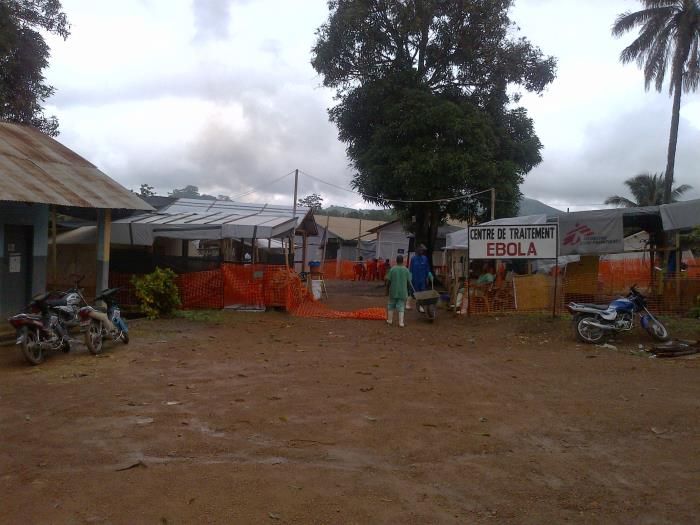
A new Ebola vaccine that is designed to be inhaled works to protect monkeys from the virus's deadly effects, according to new research.
The vaccine is now entering safety trials in a small number of people, researchers say.
Although this Ebola vaccine still has to clear many hurdles before it could be used in large numbers of people, it could have advantages over other vaccines in development, said Alexander Bukreyev, a virologist at the University of Texas Medical Branch in Galveston, and co-author of the study published today (July 13) in the Journal of Clinical Investigation.
One key advantage is that because the vaccine could ultimately be delivered through a breathing device, the "administration of such a vaccine will not require trained medical personnel," Bukreyev told Live Science. [The 9 Deadliest Viruses on Earth]
Medical shortage
The current Ebola epidemic has now plagued Africa for a year and a half, with more than 27,000 people sickened and more than 15,000 dead from the disease, mostly in Guinea, Liberia and Sierra Leone, according to the World Health Organization. Vaccines and treatments have been used in the field, either in organized clinical trials or in certain special situations. But many of the vaccines are shots that must be administered by people with at least some medical training, and in the parts of Africa involved in the outbreak, Ebola has hit health workers especially hard, leading to severe shortages in doctors and nurses.
In addition, the number of trained medical doctors and nurses in the hardest-hit countries was extremely low before the outbreak even began. In producing country-based statistics, the World Bank rounds down the number of physicians per 1,000 people to zero, for both Liberia and Sierra Leone.
Sign up for the Live Science daily newsletter now
Get the world’s most fascinating discoveries delivered straight to your inbox.
Respiratory vaccine
In the new study, Bukreyev and his colleagues administered the inhaled vaccine to six rhesus macaques. A month later, the team injected the monkeys with a dose of Ebola virus that was 1,000 times the level that would normally be deadly.
None of the monkeys died or developed severe cases of Ebola, although a few developed mild depression, Bukreyev said.
The new vaccine is made from a mild, very common respiratory virus, called human parainfluenza virus type 3 (HPIV3), that has been engineered to include genes from the Ebola virus that encode the proteins of the virus's outer coat.
The researchers found that the engineered virus infiltrated monkey's respiratory tracts, and replicated there, triggering the cells to produce many copies of the Ebola virus's coat. The immune system, in turn, recognized that outer coat as foreign, and activated a response.
The new vaccine would be an improvement over other vaccines not only because it could be delivered by people other than medical professionals, but also because the vaccine triggered two different forms of immunity — a "local" immune response, in the mucous membranes of the respiratory tract, as well as a body-wide immune system response, in form of immune cells circulating throughout the body, the researchers said.
Most other Ebola vaccines only stimulate systemic immunity, so the new vaccine could "add another layer of protection," Bukreyev said.
The National Institutes of Health is currently starting a Phase I trial of the vaccine, in a small number of people, to see if the drug is safe. Then, further studies will be needed to confirm that the vaccine is both safe and effective, which means it will likely take at least three years before the vaccine can be used in the field, Bukreyev said.
Follow Tia Ghose on Twitter and Google+. Follow Live Science @livescience, Facebook & Google+. Original article on Live Science.

Tia is the managing editor and was previously a senior writer for Live Science. Her work has appeared in Scientific American, Wired.com and other outlets. She holds a master's degree in bioengineering from the University of Washington, a graduate certificate in science writing from UC Santa Cruz and a bachelor's degree in mechanical engineering from the University of Texas at Austin. Tia was part of a team at the Milwaukee Journal Sentinel that published the Empty Cradles series on preterm births, which won multiple awards, including the 2012 Casey Medal for Meritorious Journalism.










